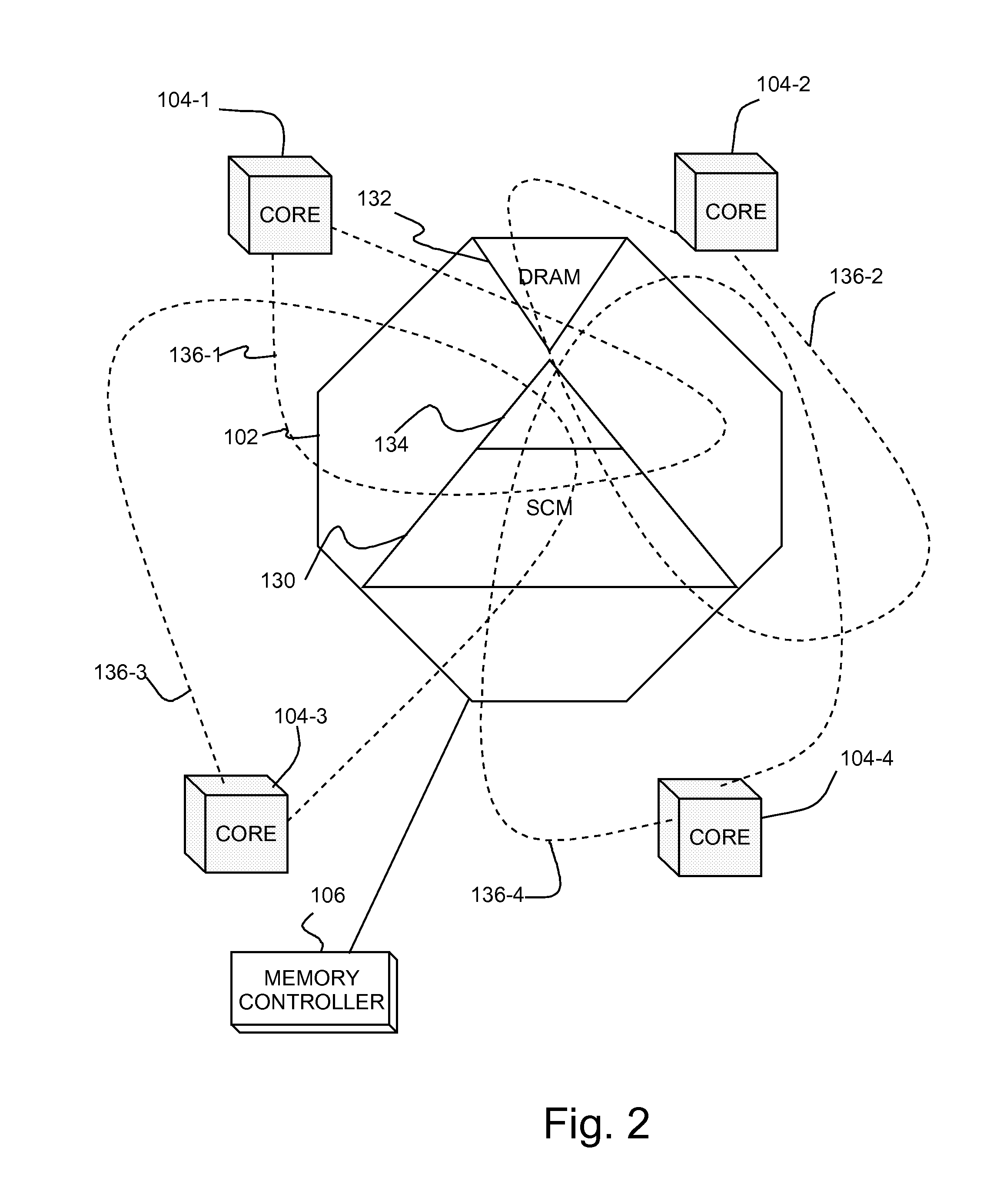Memory with mixed cell array and system including the memory
a memory and mixed cell technology, applied in the field of shared memory, can solve the problems of consuming much more power for each given unit of chip area, fast processors cannot take full advantage of their speed with equally fast memory, and achieve the effect of reducing system power consumption
- Summary
- Abstract
- Description
- Claims
- Application Information
AI Technical Summary
Benefits of technology
Problems solved by technology
Method used
Image
Examples
Embodiment Construction
[0029]Turning now to the drawings and more particularly, FIG. 1 shows an example of a system 100 with main memory that is mixed cell Random Access Memory (RAM) 102 architected according to a preferred embodiment of the present invention. In this example, the system 100 includes in a single multi-core processor 104 with multiple processors or cores 104-1, 104-2, . . . , 104-n sharing mixed cell RAM 102. A memory controller 106 allocates memory to each processor 104-1, 104-2, . . . , 104-n, based on application / thread performance requirements.
[0030]The system 100 may be any suitable information handling system or device, such as, for example, a main frame computer, a Personal Computer (PC), a laptop computer, or a hand held device, e.g., a tablet computer, a Personal Digital Assistant (PDA) or a smart phone. The preferred mixed cell RAM 102 includes a mix of memory with a performance range and density variety that may be selected based on performance over density; and / or cost (higher ...
PUM
 Login to View More
Login to View More Abstract
Description
Claims
Application Information
 Login to View More
Login to View More - R&D
- Intellectual Property
- Life Sciences
- Materials
- Tech Scout
- Unparalleled Data Quality
- Higher Quality Content
- 60% Fewer Hallucinations
Browse by: Latest US Patents, China's latest patents, Technical Efficacy Thesaurus, Application Domain, Technology Topic, Popular Technical Reports.
© 2025 PatSnap. All rights reserved.Legal|Privacy policy|Modern Slavery Act Transparency Statement|Sitemap|About US| Contact US: help@patsnap.com



